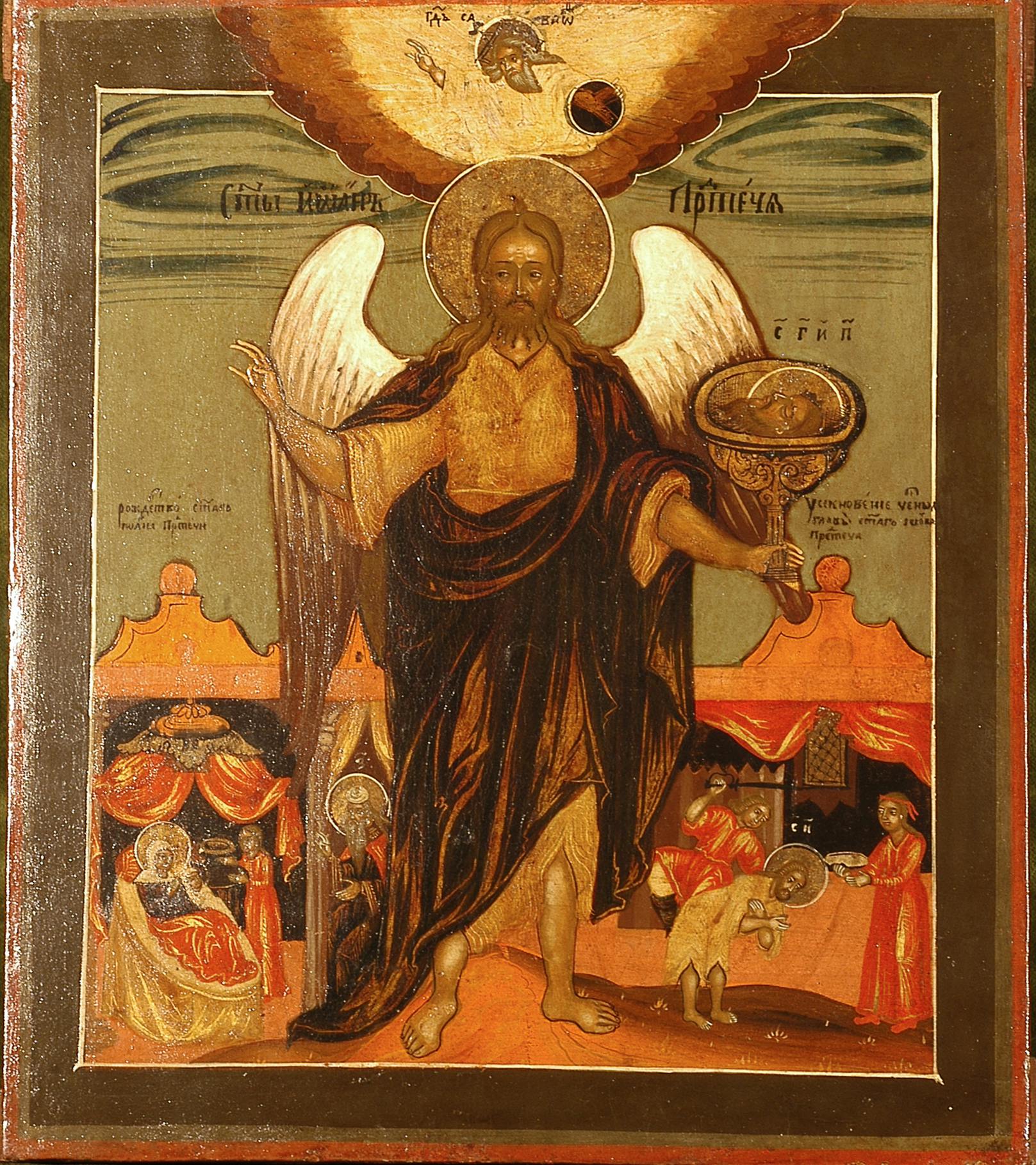St. John the Baptist, Angel of the Desert, with scenes from the story of his life
Central Russia
John the Baptist, dressed in the customary camel's hair tunic typical of prophets and ascetics, and a dark red himation, is depicted standing front facing. He is blessing with his right hand, while with his left he is holding up a basin, inside of which a severed head can be seen, symbolic of his martyrdom and evocative of the relic of John's skull that is highly venerated in the Orthodox world. Wide, multicoloured wings connote him as the “angel of the desert”, following a pattern in Eastern Christianity popularised since the 13th century which celebrates John as the heavenly messenger, the one who prepares for the advent of Christ. The iconography makes reference to the prophecies of the prophets Isaiah and Malachi cited in Gospels about John “Behold I send my messenger before thy face, who shall prepare thy way before thee” (Matthew 3:1; 11:10; Mark 1:2; Luke 7:27). The inscription on either side of the halo identifies the saint as “the forerunner”.
Below are two of the best-known stories from the Baptist’s life: his birth, celebrated on 24 June, and his beheading, celebrated on 29 August.
The icon shows stylistic features marked by Baroque elements manifested in the wavy draperies embellished with highlights, the plasticity of the bodies and the decorative architectural features, elements which also stand out in the icons depicting the Transfiguration, the Annunciation, and the Trinity in the Uffizi Gallery (inv.1890 nos. 9352, 9353, 9362), evidently executed by the same master.
